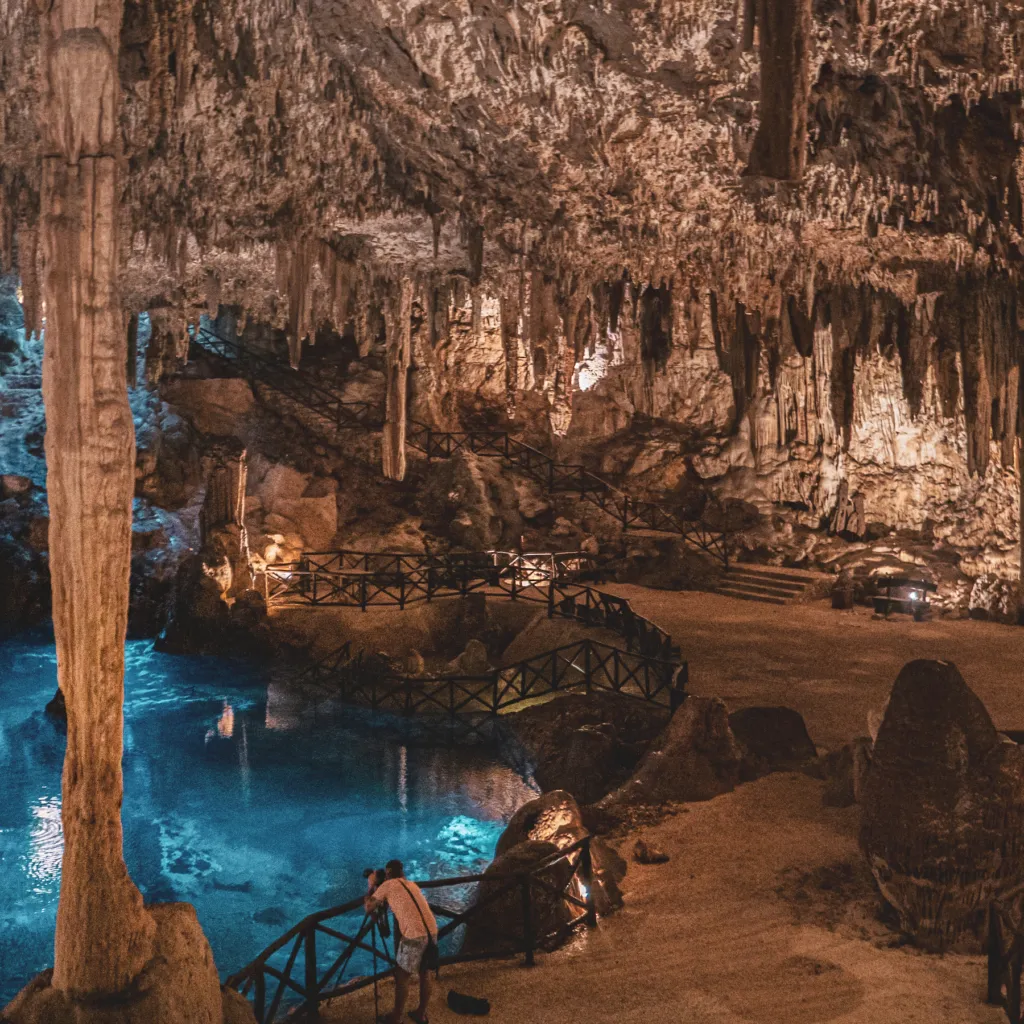The ancient Maya civilization left behind a rich legacy of mythology and cosmology, where deities held a central place in their daily life and rituals. Among these gods, those associated with cenotes and caves stand out for their importance in Maya mythology and spirituality. In this blog, we will explore some of these deities and their connection to these natural elements that were so significant to the Maya gods.
Chaac, the god of rain, is one of the most prominent deities in Maya mythology. It was believed that Chaac resided in the clouds and sent beneficial rains to the earth from there. His connection to cenotes and caves lies in his role as the guardian of underground waters, which were revered by the Maya gods as entrances to the underworld.
Ixchel, the goddess of the moon and fertility, played a crucial role in the daily and spiritual life of the Maya. She was associated with medicine, childbirth, and weaving, and was believed to reside on the sacred island of Cozumel. In relation to cenotes and caves, she was revered as the lady of the waters, bestowing blessings upon those seeking healing and protection in the eyes of the Maya gods.

Kukulkán, related to Quetzalcóatl in Aztec tradition, is a key deity in Maya mythology. Depicted as a feathered serpent, he is associated with wind, water, and fertility. His connection to cenotes and caves is reflected in legends portraying him as a protector of these places, imparting wisdom and ensuring fertility of the land for the Maya gods.
Ixtab, the goddess of suicide, represents a dark aspect of Maya mythology. Her cult was associated with caves and caverns where the souls of those who took their own lives were believed to reside. Her presence at cenotes was linked to rituals of human sacrifice, reflecting the transition between life and death in the Maya cosmology of the gods.
Bolon Yokte' is a deity associated with war and violence in Maya mythology. His name, which translates as "Nine Strides," suggests his connection to cosmic cycles. He was invoked in cenotes during rituals of war and human sacrifice to ensure the protection and victory of the Maya people with the Maya gods.
Ah Puch is the lord of death in Maya mythology, depicted as a skeleton or a decapitated corpse. He is associated with the underworld, and his presence in cenotes is linked to the transition between life and death, serving as a point of connection between the earthly and infernal realms for the Maya gods.
Yum Kaax is the god of agriculture and harvest in Maya mythology, associated with the fertility of the land. He was revered in cenotes as a guardian of life and fertility, ensuring the prosperity of crops and abundance of harvest for the Maya gods.
Yum Cimil is the god of death and sacrifices in Maya mythology, depicted as a skeleton with sharp fangs. His presence in cenotes was associated with rituals of human sacrifice, aimed at maintaining cosmic order and the prosperity of the Maya people with the Maya gods.
Hunahpu and Xbalanque are the Hero Twins of Maya mythology, renowned for their heroic feats and their confrontation with the lords of the underworld. Their adventure in the underworld is closely linked to caves and caverns, considered as gateways to these dark realms. This reflects the complexity of Maya cosmology and their profound connection with the natural world and Maya gods.

$ 32,000
/ por persona

From: $ 25,000
/ por persona

$ 22,000
/ por persona

$ 19,000
/ por persona

$ 14,000
/ por persona

From: $ 1,799
/ por persona

Share:
Today I want to take you to a magical world full of mystery, where legends come to life and ancient tales...

Share:
Hanal Pixán, which in Mayan means ‘food of the souls’, is one of the most emblematic and profound festivities of...

Share:
The Mayan culture, rich in symbolism and tradition, has bequeathed to the world a series of ancestral practices and knowledge that...

